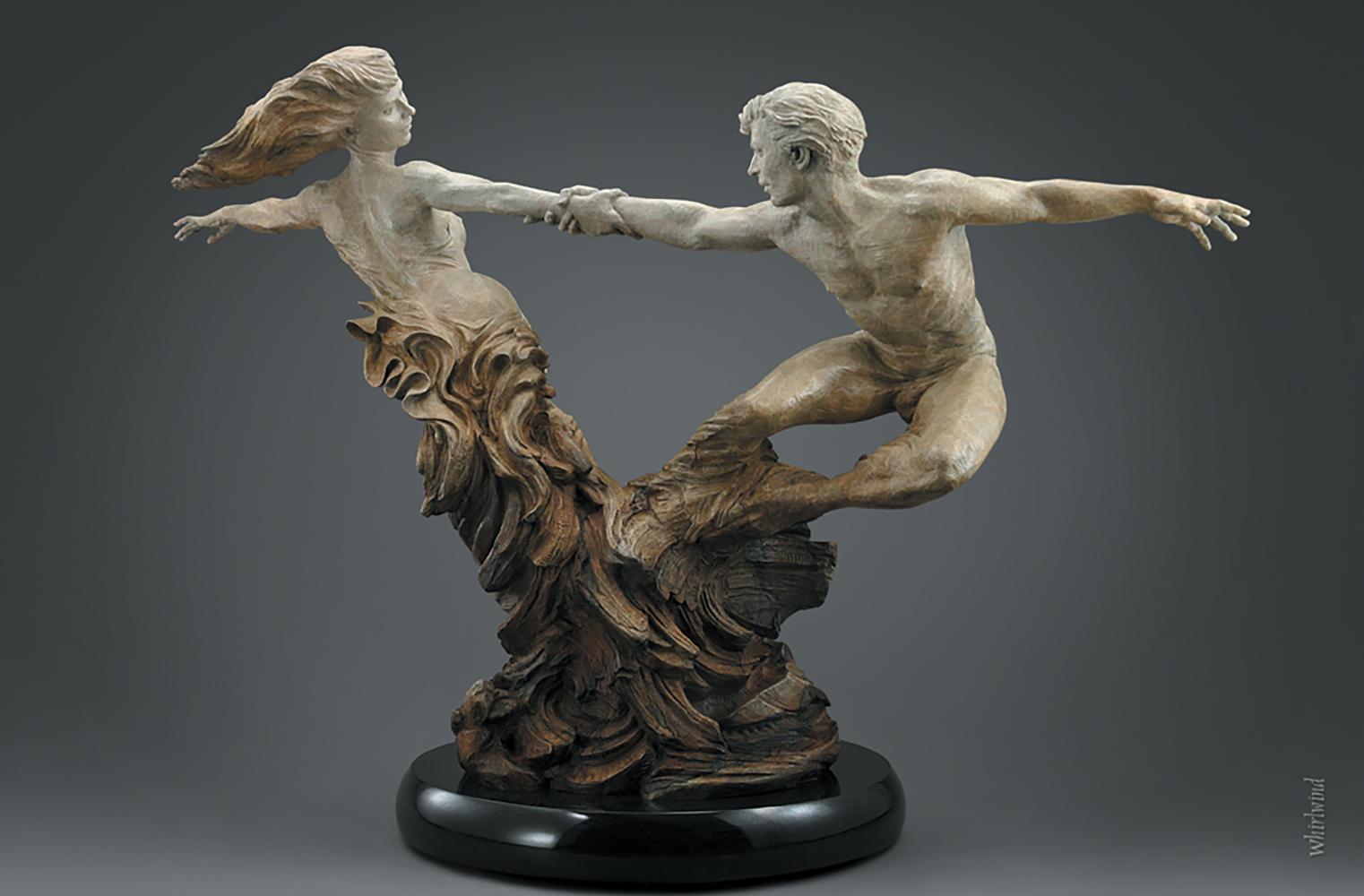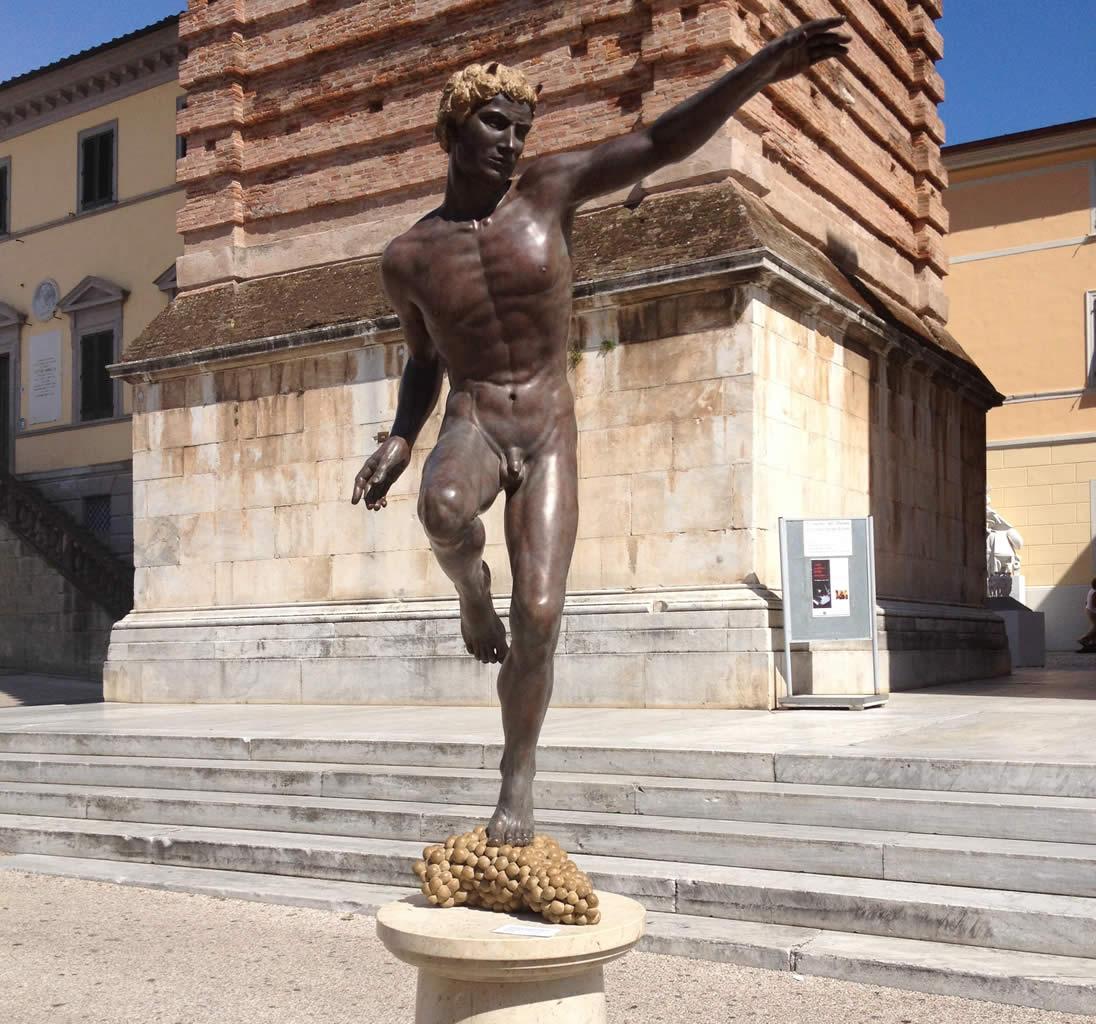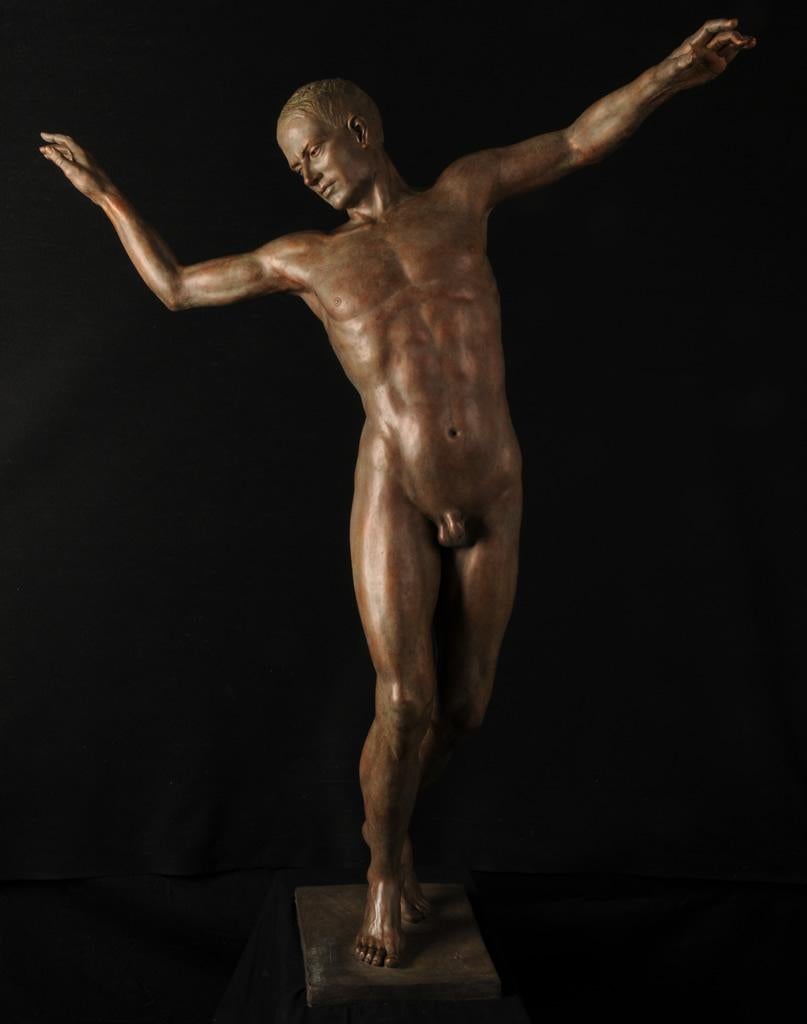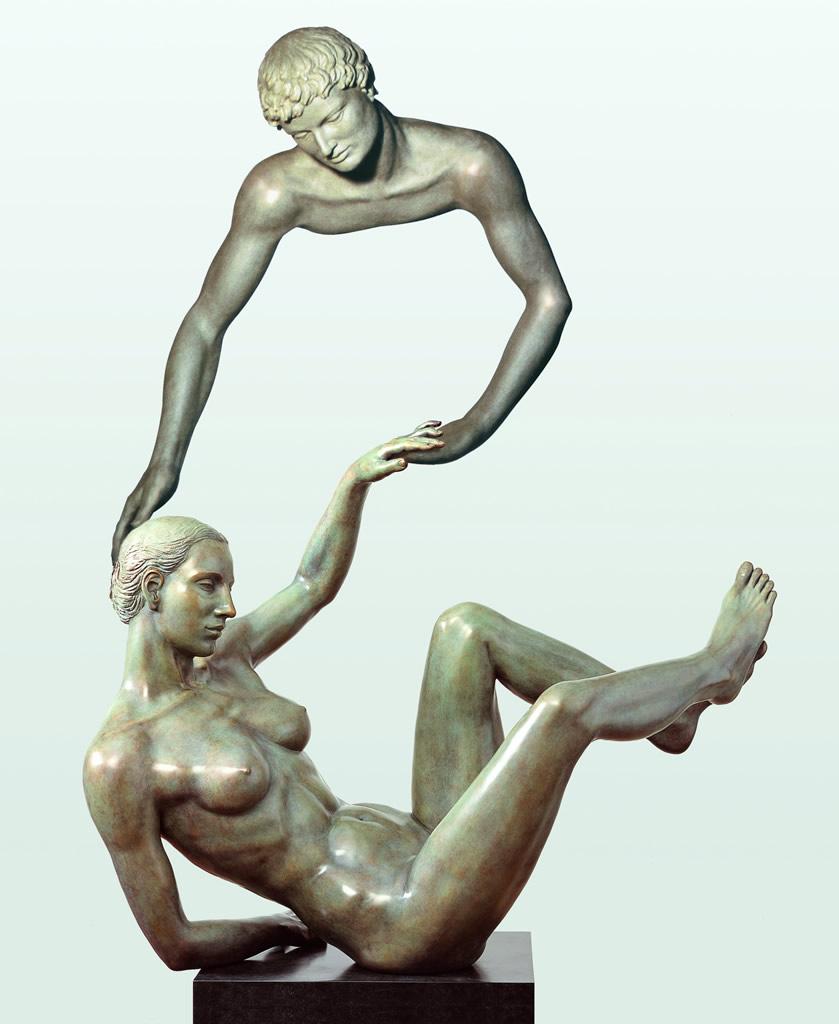Salvador DalíVénus De Milo Aux Tiroirs By Salvador DalíConceived in 1964 and cast in 1988
Conceived in 1964 and cast in 1988
About the Item
- Creator:Salvador Dalí (1904 - 1989, Spanish)
- Creation Year:Conceived in 1964 and cast in 1988
- Dimensions:Height: 86 in (218.44 cm)Width: 29.25 in (74.3 cm)Depth: 31.38 in (79.71 cm)
- Medium:
- Movement & Style:Post-Impressionist
- Period:
- Condition:
- Gallery Location:New Orleans, LA
- Reference Number:
Salvador Dalí
Instantly recognizable by his waxed, upturned mustache, the flamboyant Salvador Dalí is one of modern art’s most distinctive figures. He is also one of the icons of the 20-century avant-garde Surrealist movement, whose dreamlike images, drawn from the depths of the unconscious, he deployed in paintings, sculptures, prints and fashion, as well as in film collaborations with Luis Buñuel and Alfred Hitchcock.
Dalí was born in Figueres, Catalonia, and even as a youngster, displayed the sensitivity, sharp perception and vivid imagination that would later define his artworks. In these, he conjured childhood memories and employed religious symbols and Freudian imagery like staircases, keys and dripping candles to create unexpected, often shocking pieces.
Dalí's use of hyperrealism in conveying Surrealist symbols and concepts that subvert accepted notions of reality is epitomized in what is perhaps his most recognizable painting, The Persistence of Memory (1931), in which he depicts the fluidity of time through melting clocks, their forms inspired by Camembert cheese melting in the sun. His artistic genius, eccentric personality and eternal quest for fame made him a global celebrity.
“Each morning when I awake, I experience again a supreme pleasure,” he once said. “That of being Salvador Dalí.”
Find original Salvador Dalí paintings, prints, sculptures and other works on 1stDibs.
- ShippingRetrieving quote...Ships From: New Orleans, LA
- Return PolicyThis item cannot be returned.
- Arabesque on Right Side, Right Hand Close to Earth, Left Arm OutsideBy Edgar DegasLocated in New Orleans, LAOne of a series of sculpted dancers created by the incomparable Edgar Degas, this exceptional bronze exudes all of the expressivity one expects from this 20th-century great. Degas captures the essence of his model in the graceful work, as she strikes a particularly difficult pose of the arabesque. The dancer's features have been manipulated and simplified, executed in a manner that seems almost as if one of Degas' Impressionist canvases has come to life. Degas was obsessed with capturing the dancer in motion throughout his career. He rendered their grace and movement in oil, pastel, pencil, chalk and wax - in fact, of the seventy-four wax sculptures created by Degas during his lifetime, forty of them depicted dancers. Seven of these belong to his series that capture the various forms of the arabesque, and the present work is included among them. It details one of the most difficult and animated poses of the ballet. Degas’ dancer is precariously posed in a study of balance and motion, one leg gracefully thrust into the air as she tilts her body down towards the earth and extends her arm forward. The sense of her movement is perfectly captured in the extraordinary work, as well as the fluid lines of her body. The bronze is a sought-after rarity in terms of Degas’ sculptures. Not only are his dancers the most desirable of his work, but this bronze is also distinguished by the fact that it is a Valsuani bronze, meaning it faithfully records Degas’ wax version’s pose as it appeared at the time of its creation. Most Degas' bronzes that are found on the market were cast by Hébrard – these serialized bronzes are surmoulages, or “aftercasts,” that were cast from the modèle bronzes currently in the Norton Simon Museum (Pasadena). Because these bronzes are second generation, they are smaller and far less detailed that the current bronze. This example, however, was cast by Valsuani from a plaster that was taken directly from Degas’ waxes, according to scholarship by the art historian Dr. Gregory Hedberg. These plasters were created by Degas’ sculptor friend Albert Bartholomé shortly after Degas completed his wax figurines. Thus, they record the earliest versions of Degas’ wax sculptures, before they were damaged by time or handling, and before Degas himself altered the works. The Hébrard bronzes...Category
20th Century Impressionist Figurative Sculptures
MaterialsBronze
- Italian Marble Sculpture Of Venus And CupidLocated in New Orleans, LABeautifully detailed and lifelike, Venus and Cupid share a soft embrace in this remarkable Italian white marble sculpture. The feminine beauty gracefully leans against roughened rock...Category
19th Century Nude Sculptures
MaterialsMarble
- How They Met Themselves By John Singer SargentBy John Singer SargentLocated in New Orleans, LAJohn Singer Sargent 1856-1925 American How They Met Themselves Bronze John Singer Sargent was among the most successful artists of his era. By the late 19th century, he was the m...Category
Early 20th Century Post-Impressionist Figurative Sculptures
MaterialsBronze
- CoupleBy Agustín CárdenasLocated in New Orleans, LAInfused with a crisp modernity and subtle sensuality, this bronze sculpture by Cuban-born artist Agustin Cárdenas is an exceptional example of late-2...Category
20th Century Modern Figurative Sculptures
MaterialsMarble, Bronze
- Girardon’s Equestrian Portrait of Louis XIVLocated in New Orleans, LAKing Louis XIV, one of France's greatest monarchs, sits confidently astride a prancing steed in this bronze equestrian statue. The extraordinary work is a reduction of the portrait of the Sun King by François Girardon, one of the most noted and influential sculptors of the period. Looking back to the great masterpieces of antiquity, Girardon took his inspiration from the seminal ancient Roman marble of Marcus Aurelius, now in the Musei Capitoline (Rome). Louis XIV is thus portrayed here as a conquering Roman hero, his costume adorned with many neoclassical motifs, hand outstretched in a gesture of command. The result is an imposing royal portrait of power and absolute authority that pays homage to one of the most important sovereigns in French history. It was in 1685, at the very height of his rule, when Louis XIV commissioned the monumental bronze of himself from the great Girardon. As sculptor to the king, Girardon was a key figure in the decoration of the gardens at the Château de Versailles, and he was later commissioned to complete several important royal...Category
19th Century Other Art Style Figurative Sculptures
MaterialsBronze
- Bronze of Pluto Abducting Proserpine after François GirardonLocated in New Orleans, LAAfter François Girardon 1628-1715 French Pluto Abducting Proserpine Bronze This High Baroque period composition captures the famed narrative of Pluto and Proserpine from Roman mythology. The late 17th-century patinated bronze, created after François Girardon's marble composition, captures the very moment that Pluto seizes Proserpine. The anguished goddess reaches skyward, attempting to escape the god’s grasp while Pluto’s stoic face betrays his knowledge that his ploy will succeed. This pivotal moment in the mythological tale has captured the imagination of many art historical greats, from Bernini to Rubens. François Girardon’s version of the climax demonstrates incredible finesse and artistry, modeled expertly in bronze in the present work by a later sculptor. The statue brings a twist of intertwined bodies into a dynamic frenzy, paralleling the tension of the legendary story. In ancient Roman mythology, Proserpine, the beautiful daughter of Ceres — known as Persephone in Greek mythology — was picking flowers in the fields when she was suddenly abducted by Pluto, the god of the underworld, and taken to his kingdom. Consumed with grief, her mother Ceres, the goddess of agriculture, scorches the earth, stopping the growth of grain and fruit. Jupiter attempts to intervene and secure Proserpine’s return to earth, negotiating a compromise with Pluto and the Fates that allows Proserpine to be released for part of the year before returning to Pluto’s underworld. Proserpine’s journey back and forth is an allegory for the changing seasons; when Prosperine is with her mother, the earth warms and provides bountiful harvests. Upon her annual return to the underworld, however, the earth once again becomes cold and barren. After returning to France after years of training in Rome, François Girardon quickly rose to become one of the greatest artists in France. He was elected a member of the Académie Royale de Peinture et de Sculpture in 1657 and would become Chancellor of the Royal Academy in 1695. The artist was approached frequently for royal commissions and Girardon’s Pluto was originally commissioned by Louis XIV for the gardens at his Palace of Versailles. It was one of four monumental marble groups intended to decorate the corners of Charles Le Brun’s never completed garden at the chateau, the Parterre d’Eau. Each group of three figures symbolized one of the four elements: earth, air, fire and water. Pluto’s association with hell made him the apt...Category
Early 18th Century Baroque Figurative Sculptures
MaterialsBronze
- "Whirlwind", Martin Eichinger, Figurative, Bronze, Romantic, 54x84x72 in.By Martin EichingerLocated in Dallas, TXThe dynamic nature of this ecstatic pirouette must be experienced from all sides. Whirlwind examines the forces of attraction and separation in a relationship. The couple’s solid bon...Category
Early 2000s Realist Figurative Sculptures
MaterialsBronze
- Figura DistesaBy Franco FranchiLocated in Miami, FLFranco Mauro Franchi was born in Castiglioncello (Livorno) on 9 October 1951. He completed his artistic studies at the Lucca State Institute of Art and the Academy of Fine Arts in Fl...Category
Late 20th Century Contemporary Figurative Sculptures
MaterialsBronze
- Dionysisch Big Bronze Sculpture Mythology Classical Contemporary ArtBy Margot HomanLocated in Utrecht, NLDionysisch Big Bronze Sculpture Mythology Classical Contemporary Art The sculptures of Margot Homan (1956, Oss, NL) show a perfect command of the...Category
21st Century and Contemporary Contemporary Nude Sculptures
MaterialsBronze
- Last Heroic Season Bronze Sculpture Classic Contemporary MythologyBy Margot HomanLocated in Utrecht, NLLast Heroic Season Bronze Sculpture Classic Contemporary Mythology The sculptures of Margot Homan (1956, Oss, the Netherlands) show a perfect command of the old craft of modelling a...Category
21st Century and Contemporary Contemporary Nude Sculptures
MaterialsBronze
- Danse Mystique Dance Mystic Bronze Sculpture Classical ContemporaryBy Margot HomanLocated in Utrecht, NLDanse Mystique Dance Mystic Bronze Sculpture Classical Contemporary The sculptures of Margot Homan (1956, Oss, the Netherlands) show a perfect command of the old craft of modelling ...Category
21st Century and Contemporary Contemporary Figurative Sculptures
MaterialsBronze
- De Gave The Gift Big Bronze Sculpture Classical Contemporary MythologyBy Margot HomanLocated in Utrecht, NLDe Gave The Gift Bronze Sculpture Classical Contemporary Mythology The sculptures of Margot Homan (1956, Oss, the Netherlands) show a perfect command of t...Category
21st Century and Contemporary Contemporary Figurative Sculptures
MaterialsBronze





